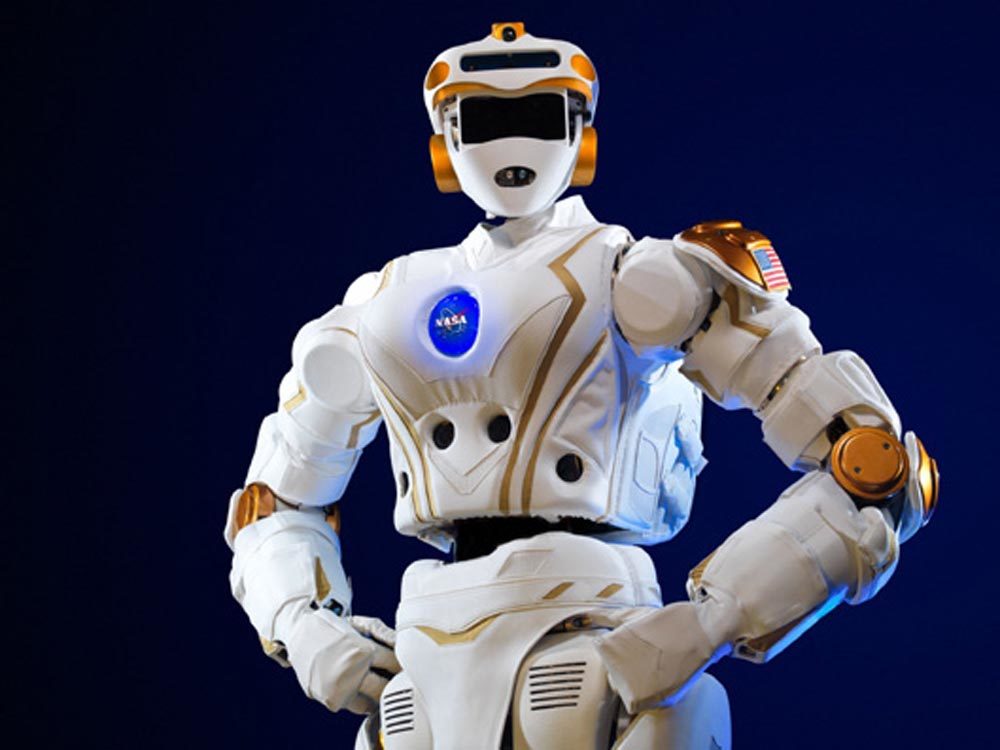Flight of the Valkyries
Robonauts step from research to reality
Valkyrie robot equipped with series elastic actuators (SEAs). Valkyrie specifically has five series-elastic rotary actuators and two linear actuators in the arms. Six finger and thumb actuators. Five series-elastic rotary actuators in the upper leg and two in the ankles. Five series elastic rotary actuators in the torso.
NASA is in the process of designing humanoid robots for deployment to space including Valkyrie, which is amid final testing at the Johnson Space Center in Houston. While NASA states Valkyrie is being developed for “damaged or degraded environments” such as natural disaster sites, the agency designed the robot with the ultimate objective of serving off-planet missions. As these robots transition from research to reality, the societal and economic implications of integrating humanoid robots into the workforce are staggering.
The humanoid robot movement is in full swing, and the headline landscape is agog with companies such as 1X, Agility, Apptronik, Figure, Sanctuary, Tesla, and Unitree, all working towards commercially viable humanoid robots in 2024. Despite the latest reports of significant funding—for example, OpenAI-backed 1X reached $100 million Series B in January—a lack of recent fundamental technological breakthroughs, especially in actuators and batteries, poses challenges to the development of bipedal robots.
Series elastic actuators (SEAs), like those found in NASA’s Valkyrie, are becoming commonplace in torque-controlled robots to achieve compliant interactions with environments and humans alike. The challenge is to make robots more efficient in how they move and respond to external forces, requiring a control system that optimizes their stability and performance. Striking a balance between two aspects of the control system allows the robot to perform various tasks effectively.
The software behind humanoid robots is becoming increasingly sophisticated. NASA’s engineers have indicated a design such as Valkyrie would eventually have the same dexterity and functionality as human operators, completing tasks such as solar-panel maintenance or equipment repair.
Robonauts are taking on increasingly dexterous and intricate tasks aboard spacecraft to offer astronauts freedom for exploration and discovery. Shaun Azimi, NASA Dexterous Robotics Team Leader, has indicated the objective is to relieve astronauts of mundane, dangerous tasks, not to supplant them.
NASA is partnering with robotics companies like Austin-based Apptronik to learn how humanoid robots developed for terrestrial purposes could benefit future humanoid robots destined for space.
Apptronik is developing Apollo, a humanoid robot whose earthly tasks will include working in warehouses and manufacturing plants by moving packages, stacking pallets, and other supply chain-oriented tasks. The company plans to start providing humanoid robots to companies in early 2025.
“Robots like Apollo are designed with modularity in mind to be able to adapt to many applications,” Azimi said. “And that’s where NASA’s trying to get that insight—to see what the key gaps are, where we would need to invest in the future to bring a terrestrial system into the space environment and certified for operating in space.”
Valkyrie was sent to Australia this past summer for preliminary tests of its dexterity and handling capabilities on an offshore oil rig, where it was used as a “remote caretaker” for uncrewed, offshore energy facilities.






